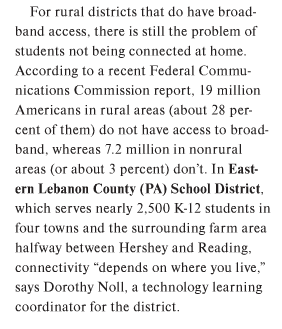Advocating Ambiguity
Where do the best ideas come from? Chinese leaders want to know. U.S. voters and leaders could benefit from thinking about it, too.
In his post “Teaching Creativity: The Answers Aren’t in the Back of the Book,” Brian Cohen makes an articulate case for arts education and the lessons any student can learn from open ended, achingly prolonged thought that does not lead to a definite answer:
Figuring things out for yourself has a high value. Thinking is the best way to learn. But it’s painful and a lot of work, and lengthy uncertainty is uncomfortable.
His analysis of what students gain from arts programs is dead on: tolerance for ambiguity, willingness to allow a thinking to run beyond the first answer, willingness to risk — then throw away that first answer, recognition that some thought resolutions may be “ugly.” Key to his analysis is a distinction between “knowledge” and “understanding.” (Do I hear Bloom whispering in his ear?). But these lessons need not be reserved just for the arts teachers. All of us should advocate for ambiguity:
As teachers, we imply there are definite answers and that we possess them. Sometimes teachers play a kind of game in which they encourage students to guess the answer in the teacher’s head. It might be better played the other way around.
How often do we encourage ourselves to guess what is inside our students’  heads? How often do we coax students to share the random or strange rumblings that may occur there as we teachers ramble and assign? How often do we ask:
heads? How often do we coax students to share the random or strange rumblings that may occur there as we teachers ramble and assign? How often do we ask:
What do YOU think?
It’s tough to resist the urge to steer students’ answers like cattle drivers funneling the herd into the chutes. Cattle inside fences are easier to manage measure. Besides, we have deadlines, right? As one of the comments on Cohen’s post points out,
we no longer have the luxury of time and uncertainty and having kids think for themselves
Maybe we should “occupy” our schools with our own signs. One benefit: thinking doesn’t cost anything.




 a time on big issues in education and edtech, and just plain think out loud. I have been fortunate to be at all EBC since its inception in Atlanta a few years ago, and I would never miss this chance to renew my faith in grassroots educators as MiracleGro to a thinking society and to positive change. This group avoids the weeds of griping and generates blooming images of “before and after” learning than any educationinfomercial.
a time on big issues in education and edtech, and just plain think out loud. I have been fortunate to be at all EBC since its inception in Atlanta a few years ago, and I would never miss this chance to renew my faith in grassroots educators as MiracleGro to a thinking society and to positive change. This group avoids the weeds of griping and generates blooming images of “before and after” learning than any educationinfomercial.




